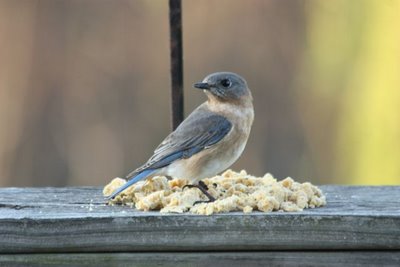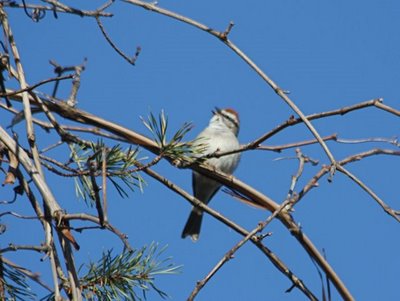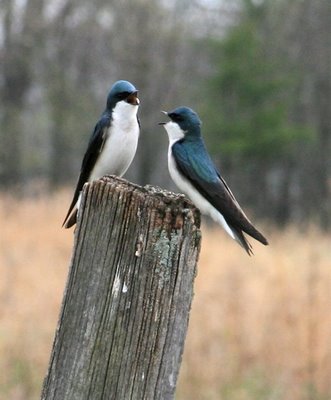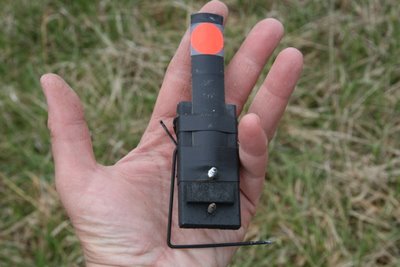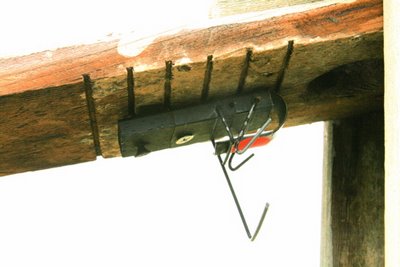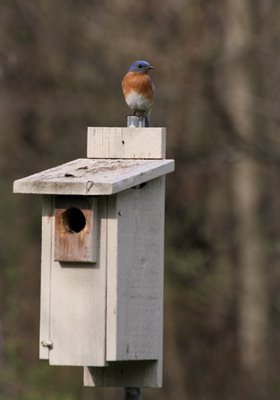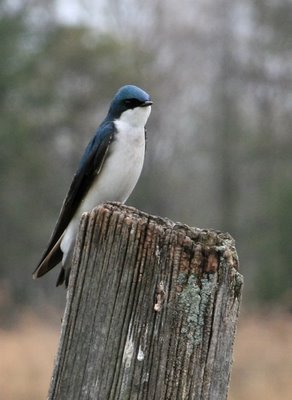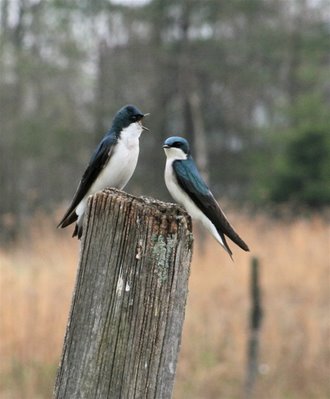Nesting Birds
Well, the spring flocks of robins are all gone, paired up, moved off to get down to business.
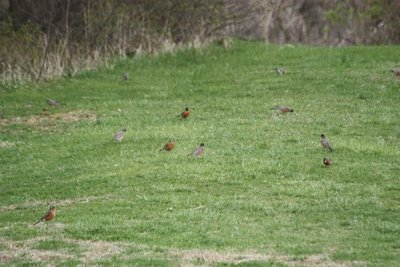
Everywhere I go I hear the tiny dry trill of nest-building blue-gray gnatcatchers. I know that's an unusual sentence, but I do. They say Prreeeeeep when they're gathering nesting material.
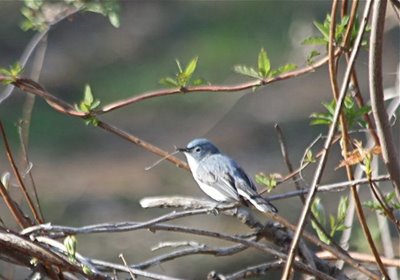
The inner bark of honeysuckle vines is great for gnatcatcher nests, and he tugs mightily to free it.
His mate has a plain face and an eyering, and she's grayer, but just as curious as he.
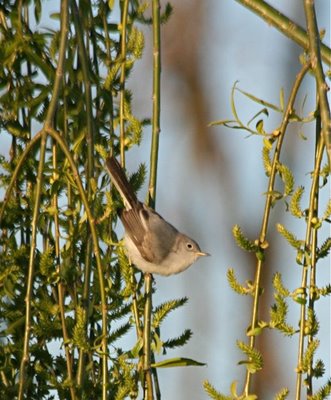
Out in the meadow, the tree swallows are well underway on their nest construction. They've started to line it with the white goose feathers we provide. Eggs won't be far behind.
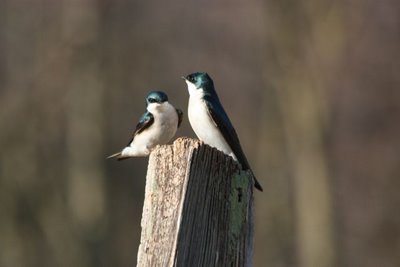
They both try to sit on the same post near their nest box, with mixed results.
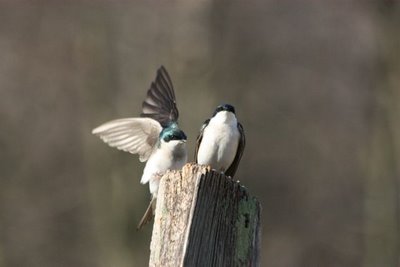
An angel lands.
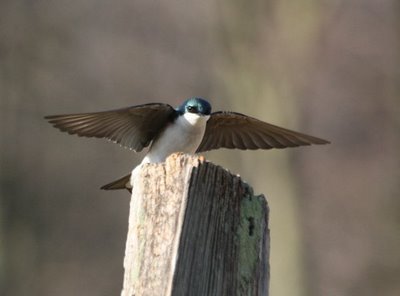
Under the deck, the phoebes have been busy, making a nest on the little television relay box. They haven't nested here for two years, since a snake got the nestlings. This year, I built a better baffle, one with no toehold for snakes. Three large panes of tempered glass and a lot of duct tape were involved. She laid two eggs, then they disappeared, before I even built the new baffle. I am hoping so hard that they come back, but I haven't seen them for a couple of weeks. Why would a bird lay two eggs, then leave? There are questions I can't answer.
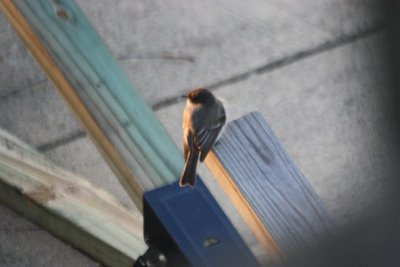
A billful of deer hair for the lining. She also added Hollofil from one of Chet's toys.
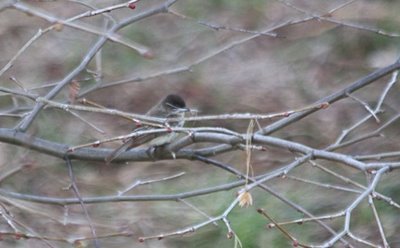 The finished nest.
The finished nest.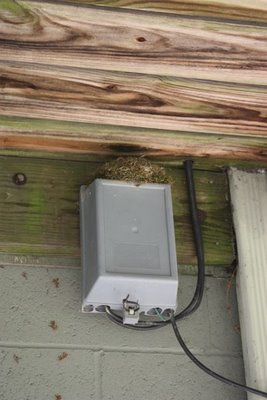 Phoebes like a low ceiling.
Phoebes like a low ceiling.The kids love to come with me when I check bluebird boxes. They especially love the road where Buck the Bull lives.
Hello, Ma'am. I made it through another winter.
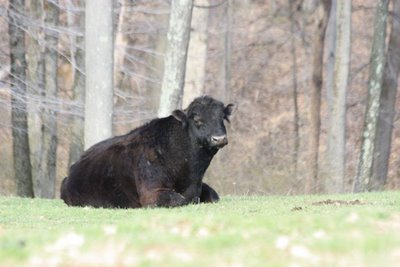
So you did, Buck. So you did. Looking a little rough, but some new grass should take care of that.
Phoebe and Liam sit on Buck's gate, talking.
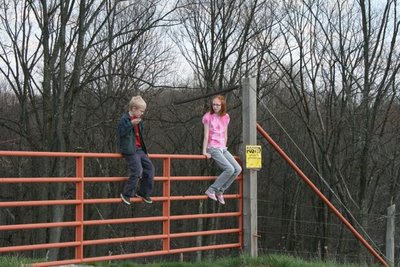 They love to peek in the boxes.
They love to peek in the boxes.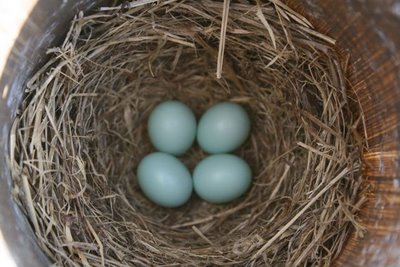 Sometimes there's a different surprise.
Sometimes there's a different surprise.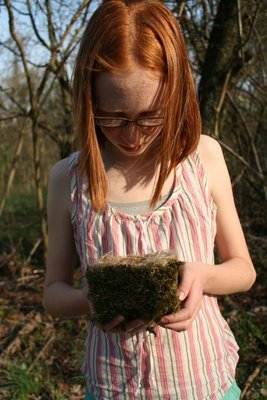 Phoebe holds a Carolina chickadee nest of moss, goldenrod stem fiber and deer hair.
Phoebe holds a Carolina chickadee nest of moss, goldenrod stem fiber and deer hair.The first egg.
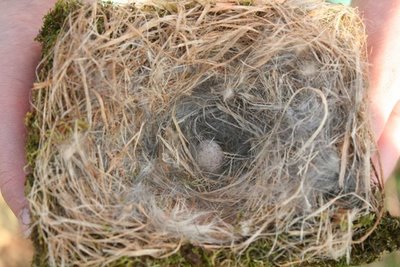 Chickadee mothers cover their eggs with fur and plant down when they have to leave the nest. It's very sweet. They make a little blanket that they pull over the eggs. I adore chickadees. I would love to tell you how many eggs the little hen has now, but she won't budge off the nest when I open the box, and I am not about to kick a chickadee out of her home just so I can know how many eggs there are. Still, it would be nice to know, because eggs are much easier to count than squirmers.
Chickadee mothers cover their eggs with fur and plant down when they have to leave the nest. It's very sweet. They make a little blanket that they pull over the eggs. I adore chickadees. I would love to tell you how many eggs the little hen has now, but she won't budge off the nest when I open the box, and I am not about to kick a chickadee out of her home just so I can know how many eggs there are. Still, it would be nice to know, because eggs are much easier to count than squirmers.And what of Gouty, the female bluebird who overindulged in Zick Dough last winter and spring?
Well, she's fine, and her feet show no traces of swelling, but she does have stiff middle toes, which stick out in this picture. I've all but stopped feeding suet dough for the spring. Just a snack in the morning.
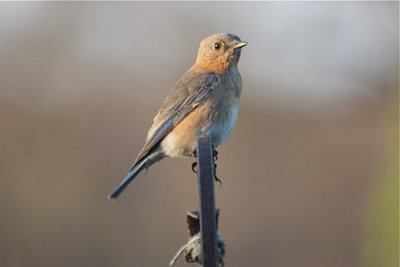
Gouty's got four daughters about a week away from fledging in the same box she used the last two years.
Here's Whiskers, named for her dark malar stripes, knee -deep in Zick dough. She's got five babies all but fledged in the box by our vegetable garden.
Labels: bluebird nests, bluebirds, Carolina chickadee, chickadee nest, chipping sparrows, Gouty the bluebird, tree swallows, Zick dough

